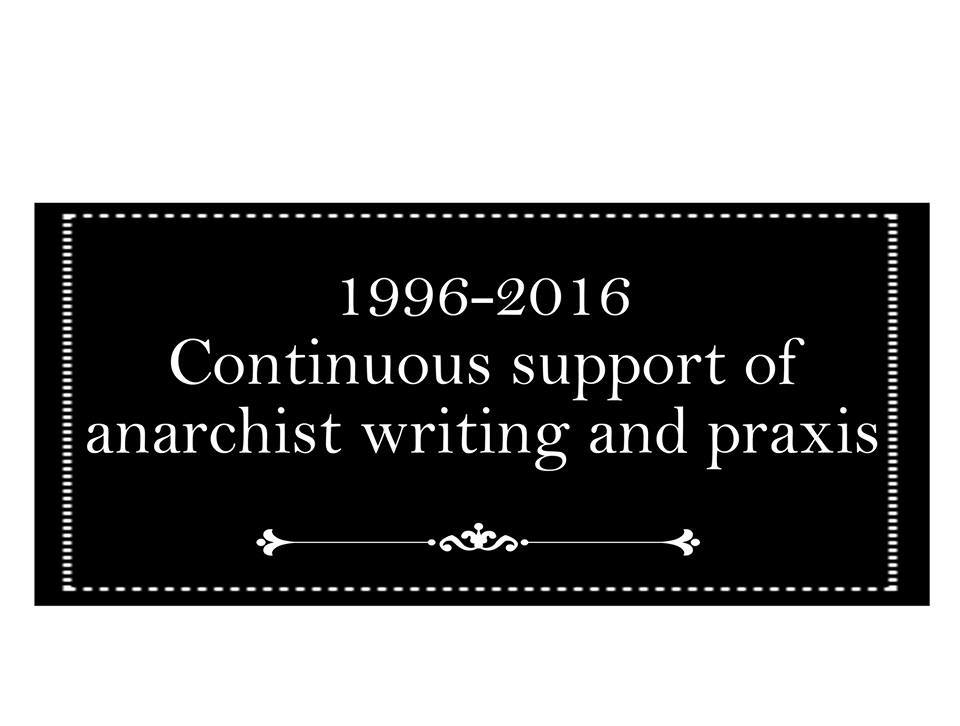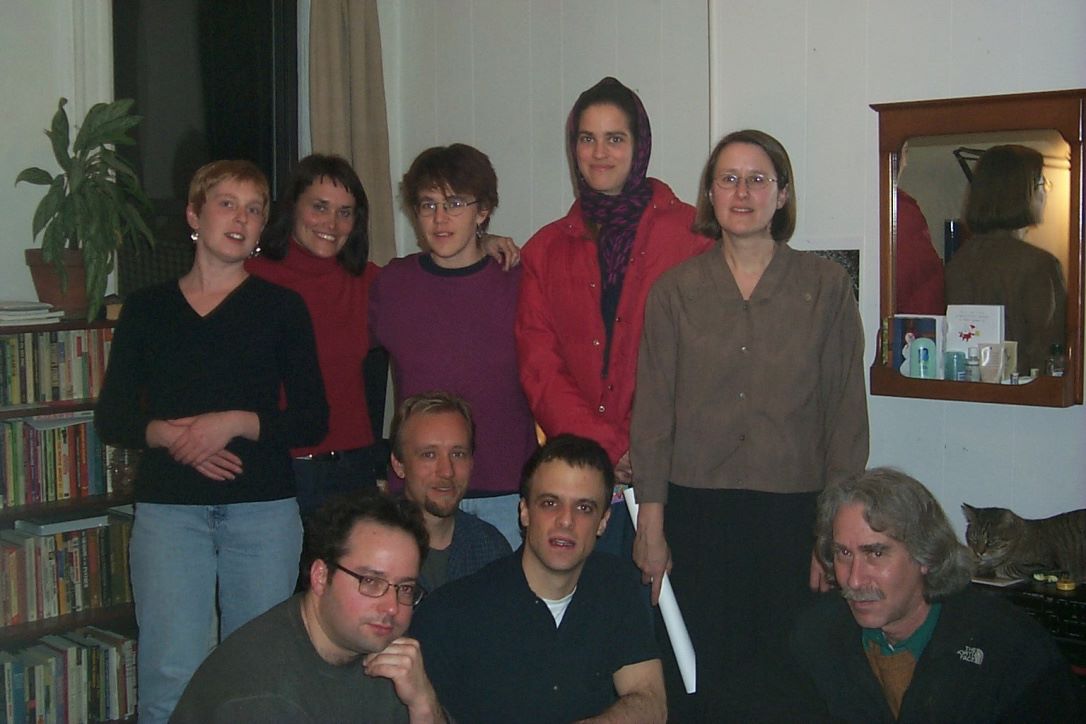Regarding the earliest days of the IAS, the story is quite simple. I was living in Greenpoint, Brooklyn when Chuck Morse called me to ask if I’d like to work with him on a new project. He explained his idea for an organization that would fund radical scholarship projects outside academia. Although it was only 1996, our circles (we had moved to New York City from Burlington, Vermont four years before to join others at the New School for Social Research) had already developed serious trepidation about “radical academia.” Was there more to life than becoming a “tenured radical?” We hoped so.

Russell Jacoby’s The Last Intellectuals: American Culture in the Age of Academe (1987) was widely circulated in our Bookchin/Institute for Social Ecology circles, leaving us young radicals with a critique of the university. But, paradoxically, in our diverse intellectual pursuits, we also sought the information available to us in academia. At the time, I reasoned the IAS project could succeed if it minimally focused on providing financial resources to writers. I immediately signed up as a Board member while Chuck began patiently working on the new non-profit organization details.
Flash forward to our first Board meeting. I noticed I had a different approach than some other Board members when it came to funding priorities. Coming from a revolutionary feminist perspective, I felt we needed to relate anarchism to people whose lives are different than those reflected in the official European/male scholarly canon. Translated into action, this conviction could have me supporting, say, a Black nationalist writer, not because I agree with all of the writer’s opinions, but because I wanted to relate anarchism to other liberation struggles. I wanted to bridge gaps I perceived between revolutionary tendencies without sacrificing anarchism’s distinct qualities. Having spent time in predominantly white Burlington anarchist circles, I was concerned that contemporary anarchism was increasingly irrelevant to communities of color. Little did I know how much this instinctual approach would shape my experience on the Board and off it, for years to come.
A few years passed after that first IAS meeting. I was living in Massachusetts, completing my Women’s Studies doctoral course work and writing my dissertation entitled Systems, Standpoints, and Subjects: Marxist Legacies in U.S. Feminist Theories. I recall one early winter in the late 90s when we received a very exciting grant application. It was a proposal for a critical feminist evaluation of the Black Liberation Army (BLA) using the New York-based applicant’s social connections to conduct interviews with members. After reading the application I jumped up and down in my living room, explaining to my partner that this is “exactly the kind of thing I want the IAS to fund.” He agreed, and also grew excited. Things were looking up in my quest to relate anarchist principles to Black revolutionary politics: putting our movement money where our (white) mouths were.
Unfortunately, the majority of the (at the time) all-white Board did not feel the same way about the well-written application; it was voted down. Arguments ranged from a critique of BLA revolutionary adventurism (one member quipped that the project was a “glorification of black men with guns” and another member called the BLA “thugs”) to the audacious argument that organizations like the BLA “ruined” the radical movements of the 1970s. (I argued that even if this were to be the case, we could stand to learn about it through a detailed study.) The meeting to consider this application (and others) was conducted over the Internet due to winter storm conditions, but we resumed discussing the controversial vote at the next meeting. I recall a fairly heated debate occurring about the application; at least I know I was heated. Board members knew I was mad because we weren’t funding the BLA study. I thought this decision contradicted other funding priorities related to armed struggles, like the propensity to fund all things Zapatista-related. “Apparently we have to cross the border for armed struggle to be a legitimate revolutionary strategy,” I joked, although it really wasn’t funny at all.
After that notorious meeting it became necessary to reevaluate my political commitments. At that time, I stopped identifying solely with the anarchist tradition because I experienced the Board’s racism. For me, that application’s rejection became a longstanding symbol of the early IAS Board’s (and US anarchism’s) myopic politics. Some of the condescending ideas expressed in that meeting still circulate today about so-called Panther/BLA adventurism and the demise of the US Left. During this time my partner and I decided to move from New York City to San Francisco. I used this move, which would require me to fly east twice a year to attend IAS Board meetings, as a convenient excuse to step down. Then I lost touch with the IAS as I pursued a tenure-track professorship (along with faculty union organizing) in the California State University-Sacramento Women’s Studies department.
The lessons I learned from this time period are priceless and multi-faceted. Democratically run organizations are complex entities that need to balance the unique opinions of their members with the needs of the whole, and for that reason it was a good idea for me to step down and let others have a whirl on our democratic IAS merry-go-round. Also, while “struggle through engagement” would have had me hanging in there to represent my minority perspective, stepping down left an absence I had hoped would speak volumes. I didn’t have the heart to directly tell people why I was so disenchanted, and I needed to do something to protest the blind views I was encountering. Quitting was the only thing that reflected my level of disagreement with the Board’s funding priorities. “See you later, racist pseudo-militant anarchism.” Onward.
Hindsight is always 20/20, it seems. While it was a good, and practical, idea at the time for me to quit the organization, for balance let’s consider the direction the IAS has taken over the subsequent decades. I am glad the organization has withstood the test of time and diversified its Board. In particular, I am also impressed by the IAS’ commitment to fund anti-racist, feminist, queer, and international scholarship. One of the few people to share my outrage at the early apparent racism on the Board – Paul Messersmith-Glavin – also came close to quitting but decided to stick with the project. He continued to push an anti-racist perspective, revealing another important lesson: engaged struggle can pay off over the long term. (In fact, it should be noted that it wasn’t too long after I quit the Board that Ashanti Alston, a Black anarchist, joined the Board.)
Back then, I wouldn’t have believed today’s conditions in the US– from the deteriorating housing and job markets to the ongoing routinized murders by cops with impunity. Also consider the demise of radical and mainstream bookstores, the defunding of the radical publications we relied on for independent news, and the continued “proletarianization of the professoriat”– one issue that led me to leave my teaching position in 2006 as I approached the brink of tenure. While all of this is a recipe for disaster, organizations like the IAS should be appreciated for not only surviving, but thriving, in such a difficult climate. So here we are. Uprisings and direct actions in the streets against policing have a new generation of activist-scholars returning to previous social movements/organizational models for lessons and inspiration. The IAS sits comfortably in this history of resistance. While the battle is always uphill, the IAS — a quintessentially late 90s (pre 9/11) anarchist organization– persists by developing authors and supporting radical scholarship for more effective resistance. On another level, the IAS’ work is also symbolic. It serves as a reminder of staying power itself, as internecine personality/political battles and financial obstacles are overcome to show us, in and of itself, that the long view is an essential one.
So here we are. Uprisings and direct actions in the streets against policing have a new generation of activist-scholars returning to previous social movements/organizational models for lessons and inspiration. The IAS sits comfortably in this history of resistance. While the battle is always uphill, the IAS — a quintessentially late 90s (pre 9/11) anarchist organization– persists by developing authors and supporting radical scholarship for more effective resistance. On another level, the IAS’ work is also symbolic. It serves as a reminder of staying power itself, as internecine personality/political battles and financial obstacles are overcome to show us, in and of itself, that the long view is an essential one.
Happy 20th Anniversary, IAS! And a special thank you to Chuck Morse for founding it and all past and current Board members for keeping the ball rolling. I appreciate the early opportunity the organization gave me to define my politics, and I am sure other past and present Board members are as appreciative of these opportunities as well. Radical communities benefit from the fine scholarship and artistry the organization continues to support.
“We still have alternatives,” the IAS explains, while smiling deviously at all pessimists and critics.
Michelle R. Matisons was a founding member of the Institute for Anarchist Studies (IAS).

